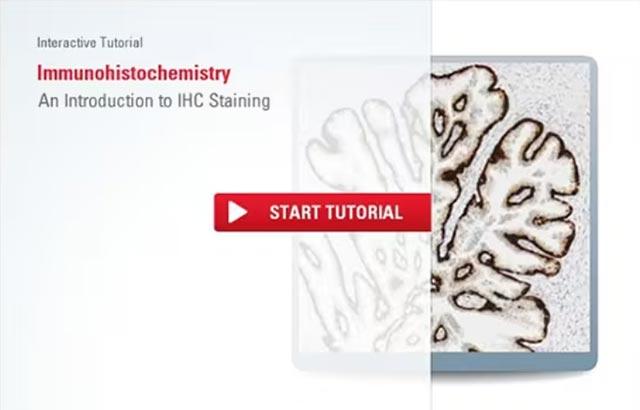
Muscular Dystrophy
Muscular dystrophy is a genetic disease characterized by progressive weakness and degeneration of the skeletal muscles which controls movement. The muscles of the heart and some other involuntary muscles are also affected in some forms of muscular dystrophy. There are also a few other forms that involve other organs as well. Over time, muscles break down and are replaced with fatty deposits. Common symptoms associated with muscular dystrophy are clumsy movement, difficulty climbing stairs, frequent tripping, and falling, inability to jump or hop normally, tiptoe walking, leg pain, facial weakness, inability to close eyes or whistle, and shoulder and arm weakness.
How Muscular Dystrophy Affects the Body
Examination and history help to distinguish the type of muscular dystrophy. Specific muscle groups are affected by different types of muscular dystrophy. Often, there is a loss of muscle mass (wasting), which may be disguised in some types of muscular dystrophy by an accumulation of fat and connective tissue that makes the muscle appear larger (pseudohypertrophy). Joint contractures are also common. Shortening of the muscle fibers, fibrosis of the connective tissue, and scarring slowly destroy muscle function. Some types of muscular dystrophy involve the heart muscle, causing cardiomyopathy or arrhythmias. A muscle biopsy may be the primary test used to confirm the diagnosis. In some cases, a DNA test from the blood may be sufficient.
Clinical phenotype spans from mild to severe. Most types of muscular dystrophy are multisystem disorders with manifestations in body systems, including the heart, gastrointestinal and nervous systems, endocrine glands, skin, eyes, and other organs. Muscular dystrophy presents itself with the following clinical features: muscle weakness, muscle wasting, hypotonia (low muscle tone), myotonia (slow relaxation of muscles after voluntary contraction), cardiac conduction abnormalities, respiratory insufficiency, and mental retardation. Histologically, patients with muscular dystrophy show a variation in fiber size, fiber necrosis, macrophage invasion, fatty displacement, nuclei are centrally placed, inclusions, cores, stored materials (glycogen), inflammation, and necrosis/regeneration.
The Five Types of Muscular Dystrophy
There are five types of muscular dystrophy: Congenital muscular dystrophy, Emery-Dreifuss muscular dystrophy, Duchenne muscular dystrophy, Becker muscular dystrophy, and Limb-Girdle muscular dystrophy. Each with its own classification determined by the mode of inheritance, the age of onset, distribution of predominant muscle weakness, the involvement of particular skeletal muscle types, and overall progression. However, accurately diagnosing this disease can be very difficult. But, with the use of special muscular dystrophy staining, the determination of the type of muscular dystrophy can be narrowed down.
Proteins Involved in Muscular Dystrophy
- Dystrophin: Part of the dystrophin-glycoprotein complex. Dystrophin deficiency disrupts the membrane localization of both dystroglycan and sarcoglycans. Deficiency of one or more of these proteins causes tears in the sarcolemmal membrane
- Spectrin: Monitors membrane integrity. Fibers that show negative labeling for dystrophin and spectrin are damaged or in the early stages of regeneration and are thought to play a mechanical role at the erythrocyte membrane.
- Utrophin: Homologue to dystrophin. Known as a dystrophin-related protein. Restricted to neuromuscular junctions in normal muscle. Labeling appears around the periphery of most fibers in dystrophin-deficient muscle. Links the actin cytoskeleton to the extracellular matrix.
- Sarcoglycan Antibodies: Patients with mutations in any one of the sarcoglycan genes usually show reduced expression for the whole group. Many patients with a clinical diagnosis of childhood autosomal recessive muscular dystrophy show defective expression in the sarcoglycan complex proteins, which involve a-sarcoglycan and g-sarcoglycan.
- Merosin (Laminin alpha 2): The heavy chain component of the laminin-2 complex located in the basement membrane. It is the ligand for the a-dystroglycan of the dystrophin-glycoprotein complex, and deficiency of merosin disrupts the extracellular anchor for the dystrophin-glycoprotein complex.
- Myotilin: Is a structural protein of sarcomeric Z discs and sarcolemma in human skeletal and cardiac muscle. Myotilin interacts with alpha-actinin, actin, and gamma-filamin and is associated with LGMD1A and is an autosomal dominant disease characterized by proximal limb weakness.
- Emerin: A transmembrane protein on the inner nuclear membrane where it then projects in the nucleoplasm. Found in skeletal, cardiac, and smooth muscle and skin. Emerin may belong to a family of lamina-associated structural proteins and whose function is unknown.
- Caveolin-3: An integral membrane protein is a major component of the caveolae membrane, which are micro-domains of the plasma membrane that have been implicated in signal transduction. Most commonly located in the scaffolding domain of the protein and may act as a scaffolding protein to organize and concentrate specific caveolin-interacting lipids and proteins.
- Dysferlin: Plasma membrane protein. Present at the periphery of fiber in muscle. Absent or reduced in patients with LGMD2B. Localized to the muscle plasma membrane. Dysferlin-deficient patients, absent reaction at the sarcolemma but positive nuclear membrane labeling. Partially dysferlin-deficient patients scattered granular positive cytoplasmic areas and diffuse reaction in regenerating fibers.
When an accurate diagnosis is reached, treatment is usually based on controlling the onset of symptoms and maintaining a high quality of life. Management of individuals with muscular dystrophy depends very much on the type of muscular dystrophy and its severity. Prevention by counseling and prenatal diagnosis is now possible for almost all muscular dystrophies. However, for prevention to be reliable, a precise diagnosis is essential. Diagnoses are based on clinical examination to establish the types of muscular dystrophy, where laboratory investigations help identify the mutation type, and research is focused on a form of gene therapy. As advances in medicine continue, effective drug treatment might also be a possibility.
Summary
Muscular dystrophy is a heterogeneous group of inherited disorders characterized by progressive muscle wasting and weakness. The genes and protein products that are responsible for the dystrophies have been identified for most types of dystrophy. Using muscle protein studies and molecular genetic studies in the majority of cases, it is possible to establish a precise diagnosis, provide a prognosis, detect preclinical cases, identify carriers, and offer prenatal diagnostic testing. The quality of life of individuals with dystrophy can be much improved by a positive attitude to management, which includes respiratory care, physiotherapy, and the surgical correction of contractures. A molecular genetic approach seems to offer the best prospect for developing effective treatment in the future.
About the presenter

Steven Westra is a renowned antibody staining consultant with over ten years of experience in the immunohistochemistry industry.
Related Content
Leica Biosystems Knowledge Pathway content is subject to the Leica Biosystems website terms of use, available at: Legal Notice. The content, including webinars, training presentations and related materials is intended to provide general information regarding particular subjects of interest to health care professionals and is not intended to be, and should not be construed as, medical, regulatory or legal advice. The views and opinions expressed in any third-party content reflect the personal views and opinions of the speaker(s)/author(s) and do not necessarily represent or reflect the views or opinions of Leica Biosystems, its employees or agents. Any links contained in the content which provides access to third party resources or content is provided for convenience only.
For the use of any product, the applicable product documentation, including information guides, inserts and operation manuals should be consulted.
Copyright © 2025 Leica Biosystems division of Leica Microsystems, Inc. and its Leica Biosystems affiliates. All rights reserved. LEICA and the Leica Logo are registered trademarks of Leica Microsystems IR GmbH.



